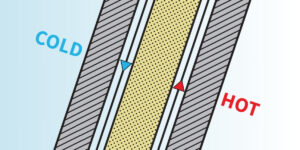Best practice: fire resistance in construction
Enhance safety and compliance by utilizing advanced fire-resistant materials and techniques in construction with continuous insulation and building enclosure systems.
Best Practices
Fire Resistance
![]() Fire resistance is an essential safety feature in the design of continuous insulation and building enclosure systems. It involves the use of materials and construction techniques that can withstand fire, preventing or slowing the spread of flames and contributing to the overall fire safety of a building. This capability is crucial for protecting life and property, allowing more time for evacuation and reducing structural damage in the event of a fire. By adhering to best practices in fire resistance, designers and builders ensure that their projects comply with stringent safety regulations and provide a safer environment for occupants. Integrating effective fire-resistant measures is fundamental in enhancing the resilience and safety of modern construction projects.
Fire resistance is an essential safety feature in the design of continuous insulation and building enclosure systems. It involves the use of materials and construction techniques that can withstand fire, preventing or slowing the spread of flames and contributing to the overall fire safety of a building. This capability is crucial for protecting life and property, allowing more time for evacuation and reducing structural damage in the event of a fire. By adhering to best practices in fire resistance, designers and builders ensure that their projects comply with stringent safety regulations and provide a safer environment for occupants. Integrating effective fire-resistant measures is fundamental in enhancing the resilience and safety of modern construction projects.
Features
Passes ASTM E84
Continuous insulation and building enclosure systems that pass ASTM E84 have been tested for surface burning characteristics ensuring they do not ignite easily and have a slow flame spread, which is crucial in maintaining structural integrity during a fire.
NFPA 285 compliance
Systems compliant with NFPA 285 meet rigorous standards for fire resistance in multi-story buildings, providing assurance that the materials used inf acades effectively contain and limit the spread of flames, thereby enhancing the overall safety of the building.
Passes UL 94
The UL 94 test is crucial for determining the flammability of plastic materials used in continuous insulation and building enclosures, ensuring they meet safety requirements despite not replicating real-world conditions. This flammability rating system is a key component of compliance with best practices in building safety and material performance.
Halogen-free
By being halogen free, systems eliminate the risk of releasing toxic halogenated gases during combustion, significantly improving fire safety by reducing harmful emissions and increasing the chance of occupant survival in case of a fire.
How GreenGirt CMH and SMARTci Systems Meet and Exceed Fire Resistance Standards
GreenGirt CMH and SMARTci systems exemplify fire safety excellence in building construction, exceeding industry standards. They are ASTM E84 certified, ensuring slow flame spread and high ignition resistance, vital for structural integrity in fires. NFPA 285 compliance confirms their effectiveness in limiting fire spread in multi-story buildings, enhancing occupant safety. Additionally, being halogen-free, these systems avoid toxic gas emissions during fires, increasing environmental safety and occupant survival chances. These features affirm their leadership in fire-resistant building solutions, setting high benchmarks in the industry.















